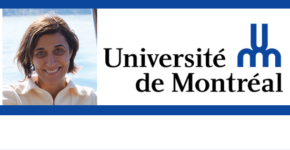 The benefits of bilingualism are more than once thought.
The benefits of bilingualism are more than once thought.
Ana Inés Ansaldo, associate professor in the school of speech-language pathology and audiology at the University of Montreal, explores these benefits and how they can help us improve ourselves.
Dre Ansaldo completed her Ph.D in Biomedical Sciences at the Université de Montréal, and a Post-doctoral training, at McGill University. In 2002, she received the Institute of Aging Special Prize, awarded by the Canadian Institute of Health Research; she also has been honoured with the Premio Venezia, the Prix excellence pour une expérience novatrice en recherche clinique de l’Association des établissements de réadaptation en déficience physique du Québec (AERDPQ). She Heads the Laboratoire de Langage Communication et Vieillissement at the CRIUGM, she is the Director of teaching at the Institut de gériatrie de Montréal, and a professor at the École d’orthophonie et d’audiologie, of the Université de Montréal.
On March 22, 2013, the first Symposium on knowledge transfer took place at CRIUGM. This symposium titled as “Knowledge Transfer: Research Feedback to an Aging Society” was organized by CRIUGM under the responsibility of Dr. Ana Ines Ansaldo, researcher and laboratory director. The aim of this event was to increase the exchange among different parties taking part in sharing knowledge about aging. Invited speakers were from various backgrounds: researchers in gerontology and geriatrics, knowledge transfer from an OBNL, members of the Citizen’s Jury, clinicians, experts of communications and media, as well as politicians.
Benefits of Bilingualism
Bilingualism is an amazing ability. Speaking at least two languages has social and cultural benefits. It favors self-confidence and open-mindedness, and provides supplementary tools to perform in our globalized world.
However, recent research proved that the advantages of bilingualism are even more fundamental. It shapes the brain differently from its development until the last moment of life.
Using fMRI, we compared the global networks recruited by elderly bilinguals and monolinguals, while they performed a non linguistic task. The task required focusing on one piece of information – namely the color of the target – while other information presented simultaneously, and in a confusing manner, had to be ignored.
Both groups performed the task correctly, but the brains of elderly bilinguals and monolinguals differed in the way they processed the task. Specifically, monolinguals engaged a network which rely on a wider variety of brain areas, whereas bilinguals network focuses on one brain area expert in the processing of color.
In other words, the bilingual brain is more specific-to the task, that the monolingual brain.
These findings suggest constantly dealing with two languages wires your brain differently, so that the processing of complex information can be achieved in a more efficient or economic manner.
Requiring less brain resources to solve a complex task could explain why bilinguals show the symptoms of dementia several years later than monolinguals, thus making bilinguals more resilient against the causes of dementia.
